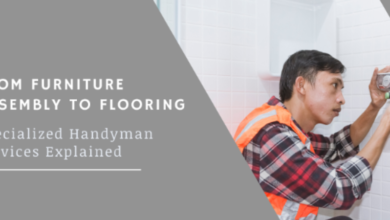How to Select the Right Custom Home Builder: Key Factors to Consider

Building a custom home is a significant investment and a deeply personal project. It involves turning your vision into reality, and the success of this endeavor largely depends on choosing the right custom home builder. Selecting the ideal builder can ensure your project runs smoothly, stays on budget, and meets your expectations. Here are the key factors to consider when choosing a custom home builder.
1. Define Your Needs and Goals
Before you start looking for a custom home builder, it’s essential to have a clear understanding of your needs and goals for the project.
a. Determine Your Budget
Having a realistic budget in mind will help you narrow down your options and ensure that you choose a builder who can work within your financial constraints. Consider all aspects of the project, including construction costs, permits, and any additional expenses that may arise.
b. Identify Your Style Preferences
Decide on the architectural style and design features you want for your custom home. Whether you prefer a modern, traditional, farmhouse, or contemporary style, knowing your preferences will help you find a builder who specializes in that type of design.
c. Outline Your Must-Haves
Make a list of must-have features and amenities for your home. This could include the number of bedrooms and bathrooms, a gourmet kitchen, energy-efficient features, or smart home technology. Having a clear list will help you communicate your vision to potential builders.
Read also: Flood Cleanup Services: A Comprehensive Guide to Restoring Your Home
2. Research Potential Builders
Once you have a clear understanding of your needs and goals, it’s time to start researching potential custom home builders.
a. Seek Recommendations
Start by asking friends, family, and colleagues for recommendations. Personal referrals can provide valuable insights into the quality of work and customer service provided by a builder. Additionally, consider reaching out to real estate agents and architects for their suggestions.
b. Explore Online Resources
Use online resources to find custom home builders in your area. Websites like Houzz, Angie’s List, and the National Association of Home Builders (NAHB) can provide a list of reputable builders along with reviews and ratings from past clients.
c. Review Portfolios
Visit the websites of potential builders to review their portfolios. Look for projects that are similar in scope and style to your vision. This will give you an idea of the builder’s expertise and whether they can deliver the type of home you want.
3. Evaluate Credentials and Experience
When evaluating potential custom home builders, it’s crucial to consider their credentials and experience.
a. Verify Licensing and Insurance
Ensure that the builder is properly licensed and insured. Licensing requirements vary by state and locality, so check with your local regulatory authority to verify that the builder meets all necessary requirements. Insurance is essential to protect you from liability in case of accidents or damage during construction.
b. Assess Experience
Consider the builder’s experience in constructing custom homes. An experienced builder will be more familiar with the unique challenges and requirements of custom home building. Look for builders with a proven track record of successful projects and satisfied clients.
c. Check Professional Associations
Look for builders who are members of professional associations such as the NAHB or the National Association of the Remodeling Industry (NARI). Membership in these organizations indicates a commitment to professionalism and ongoing education.
4. Conduct Interviews
Once you have narrowed down your list of potential builders, conduct interviews to further evaluate their suitability for your project.
a. Prepare Questions
Prepare a list of questions to ask each builder during the interview. Some important questions to consider include:
- How long have you been in business?
- Can you provide references from previous clients?
- What is your estimated timeline for the project?
- How do you handle unexpected issues or changes during construction?
- What is your process for communication and updates during the project?
b. Assess Communication Skills
Pay attention to the builder’s communication skills during the interview. Effective communication is crucial for a successful custom home project. Choose a builder who listens to your needs, answers your questions clearly, and communicates in a professional and respectful manner.
c. Discuss Budget and Costs
Discuss your budget and ask for a detailed estimate of the project costs. Make sure the estimate includes all potential expenses, such as labor, materials, permits, and any additional fees. Be wary of builders who provide vague or overly optimistic estimates.
5. Check References and Reviews
Before making a final decision, check references and reviews to ensure that the builder has a track record of satisfied clients.
a. Contact References
Ask the builder for a list of references from previous clients. Contact these references to inquire about their experience with the builder. Some questions to ask include:
- Were you satisfied with the quality of work?
- Was the project completed on time and within budget?
- How did the builder handle any issues or challenges that arose?
- Would you hire this builder again for future projects?
b. Read Online Reviews
Read online reviews on multiple platforms to get a comprehensive understanding of the builder’s reputation. Look for patterns in the reviews, such as consistent praise for craftsmanship or recurring complaints about communication.
c. Visit Completed Projects
If possible, visit some of the builder’s completed projects to see the quality of work firsthand. This can give you a better sense of the builder’s attention to detail and craftsmanship.
6. Review Contracts and Agreements
Once you have chosen a custom home builder, review all contracts and agreements carefully before signing.
a. Detailed Contract
Ensure that the contract includes a detailed scope of work, a timeline for completion, a payment schedule, and any warranties or guarantees. The contract should also outline the process for handling changes or unexpected issues during construction.
b. Clear Payment Terms
Make sure the payment terms are clear and reasonable. Avoid builders who require large upfront payments or refuse to provide a detailed payment schedule.
c. Written Change Orders
Include a provision for written change orders in the contract. This ensures that any changes to the scope of work or budget are documented and agreed upon by both parties.
7. Monitor the Project
Once construction begins, stay involved and monitor the project’s progress to ensure that it stays on track.
a. Regular Updates
Maintain regular communication with the builder to receive updates on the project’s progress. Address any concerns or issues promptly to avoid delays or misunderstandings.
b. Site Visits
Visit the construction site regularly to check on the quality of work and ensure that the project is progressing according to the agreed-upon timeline and scope.
c. Final Walkthrough
Conduct a final walkthrough with the builder before completing the project to ensure that all work has been completed to your satisfaction. Address any remaining issues or touch-ups before making the final payment.
Conclusion
Selecting the right custom home builder is a critical step in ensuring the success of your custom home project. By defining your needs and goals, researching potential builders, evaluating credentials and experience, conducting interviews, checking references and reviews, and carefully reviewing contracts, you can make an informed decision and choose a builder who will bring your vision to life. With the right builder, you can create a beautiful, functional, and personalized home that meets your needs and reflects your unique style.




